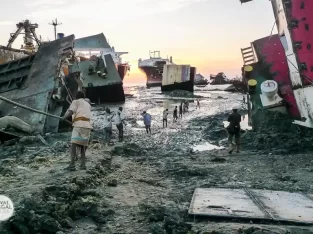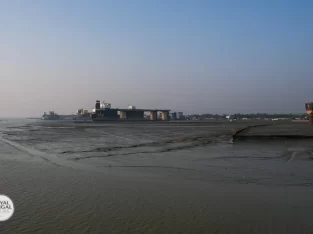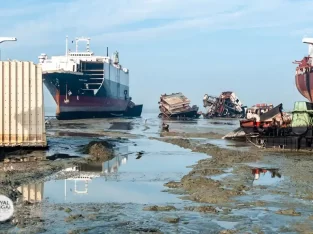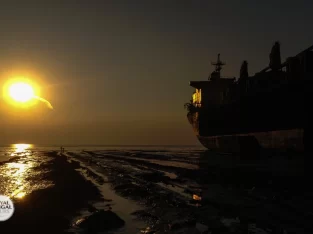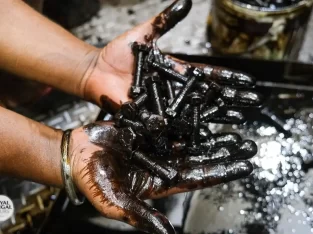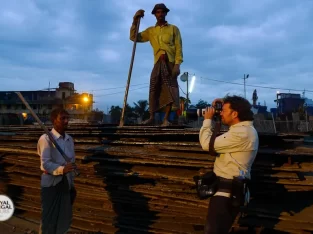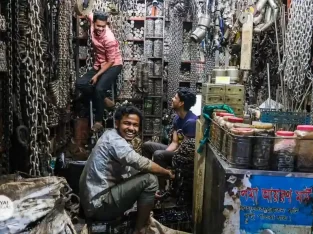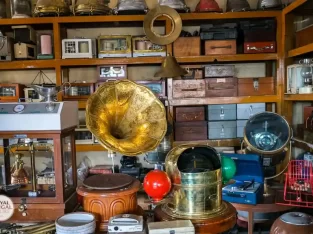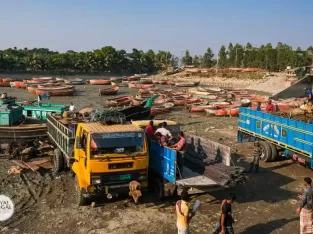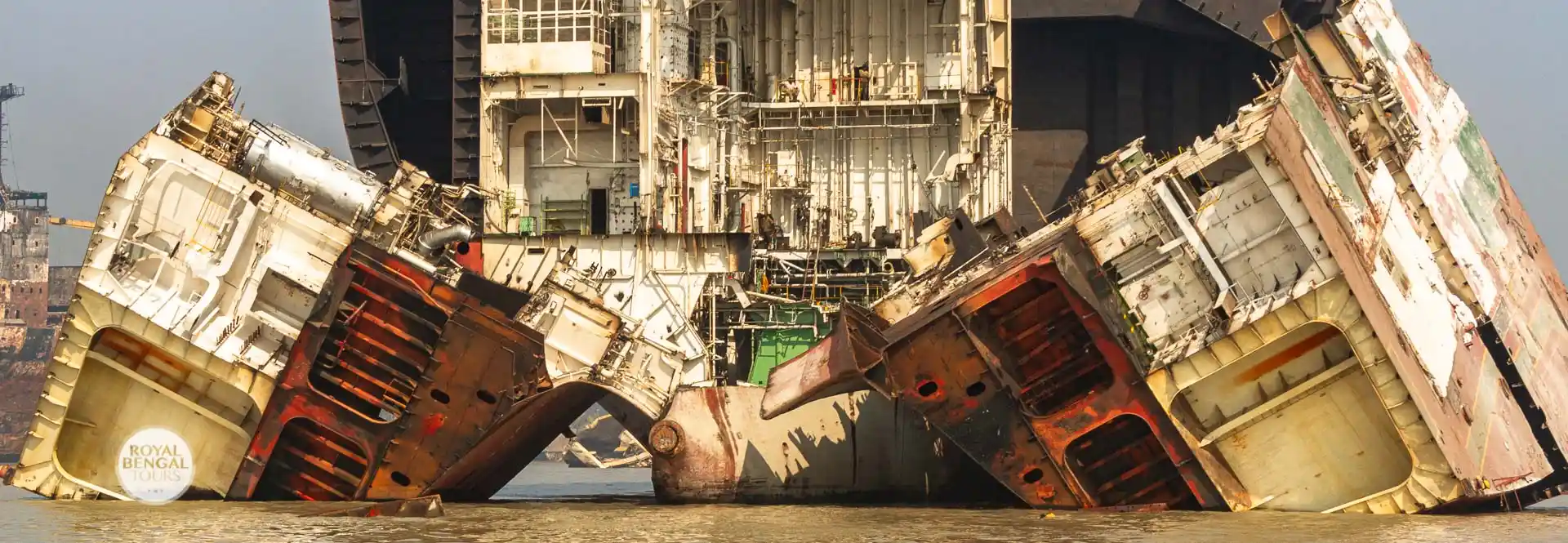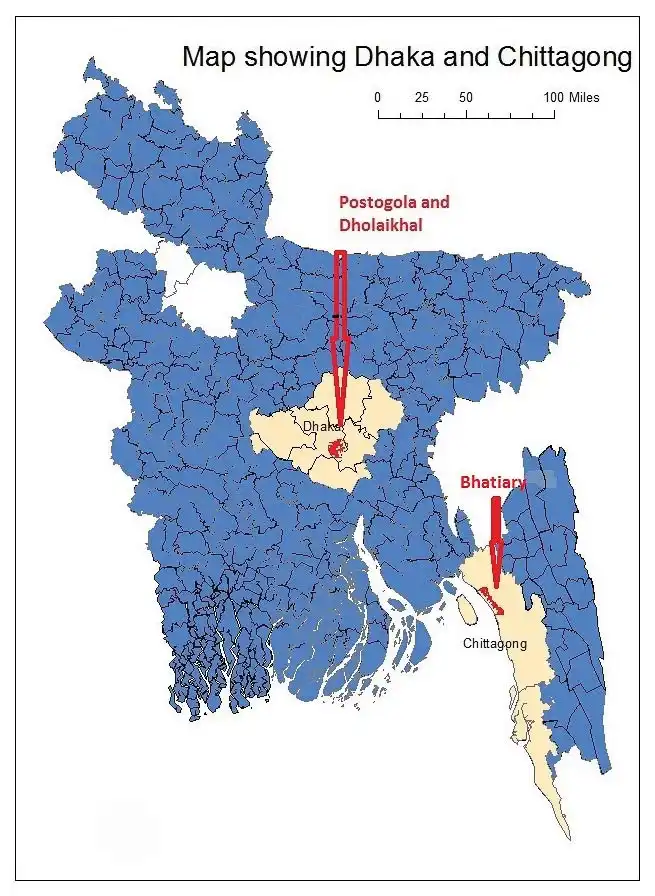Your cart is currently empty!
World's largest metal recycling industry
Chittagong Shipbreaking Yards
The Chittagong shipbreaking yards or ship recycling industry in Bangladesh decomposes end-of-life ships into metal and other engineered products for the local market, recycling every part of the hull and machinery. In the 1960s, shipbreaking activity began in Chittagong when a ship was abandoned on the beach after a heavy cyclone. The ship was stuck on the sandy beach, and it would have been too expensive to pull it out. It stayed there for years until locals found it and scavenged it. During the liberation war in 1971, locals also scavenged a few stranded ships here. An organized ship recycling industry finally started in the 1980s. By 2008, most of the 704 commercial ships scrapped worldwide were in Bangladesh and India. In 2009, out of 1014 ships, about 200 (21%) were dismantled in Chittagong. As of 2010, there were about 119 ship-breaking yards in Chittagong. This is an increase from 2008, when only 57 yards were working because the Bangladesh Supreme Court temporarily banned ship-breaking because there were too many fires and explosions in the yards.
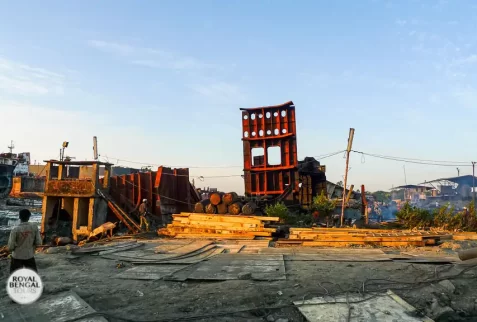
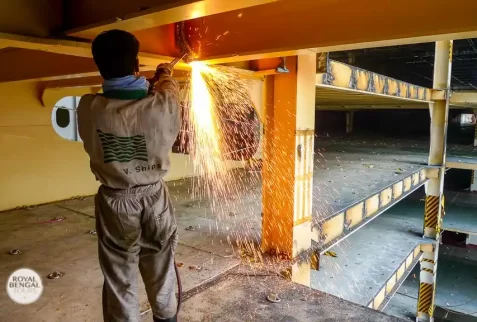
How do they cut the ships by hand?
The ships are first dismantled into larger sections, and then those larger sections are dragged by the winch during high tide to the end of the muddy areas beyond the water line. Cuttermen use blowtorches to cut these large sections into smaller ones, which are then carried by the magnetic grabs to the trucks. Workers carry small, lightweight pieces from ships to dry areas to sell. A massive scale weighs both unloaded and loaded trucks to measure the number of metals sold. All of this equipment greatly reduces the amount and weight of metal that workers must carry from the ships to the yards. The Chittagong shipbreaking industry employs more than 50,000 people directly, and more than 100,000 people are indirectly employed.
Where can I find the shipbreaking yards?
Most of the shipbreaking yards in Chittagong are in the Sitakunda Thana area, which is about 20 kilometers along the coast. About 100 yards operate along Sitakunda’s coastal areas, primarily in Kumira, Bhatiary, and Fouzdarhat, with each yard measuring 200–300 m2. The yards occupy only about 4,000 m2 of land, representing intense economic activity per square meter of land. In Sitakunda, the roads are lined with hundreds of small shops selling second-hand goods from the yards. These shops range in size from 30 to 50 square meters. Each shop sells specific products bought from the yards. This is the first stage of sorting the reclaimed materials after they are stripped from the ships.
Criticism directed at the shipbreaking industry!
People often criticize the industry in Bangladesh and elsewhere for polluting the environment and not taking care of worker safety well enough. Shipyards are established through mangrove deforestation, and tests of the coastal waters around shipyards have found elevated levels of oil, heavy metals, PCBs, asbestos, and other toxic pollutants. In the past, workers were exposed to a variety of immediate threats, from toxic air inside the ships to injuries from falling debris, as well as chronic effects from exposure to toxins and asbestos. However, the shipbreaking industry provides benefits to the Old Dhaka and Bhatiary communities and the country through jobs and metal resources. International agreements like the 2009 Hong Kong International Convention for the Environmentally Sound and Safe Ship Recycle aim to protect the environment and workers in places like Bangladesh’s shipbreaking industry.
What other industries are the shipbreaking yards linked with?
The Postogola neighborhood is about 5 km2 and is situated on the bank of the Burigonga River, which surrounds the capital city of Dhaka. Hundreds of enterprises conduct their business there. Business owners are residents of this region and are noted for their own cultural differences with respect to the rest of Dhaka. The Dholaikhal neighborhood is about four to five kilometers from Postogola and roughly the same size. Historically, this part of Dhaka has always been a business center dominated by traditional industries, such as metal recycling. The specific accent of the Bengali language, low education
rate, unique food items, and marriage ceremonies distinguish the inhabitants of old Dhaka from those cultures in “new” Dhaka. While the Old Dhaka people maintain their linguistic accent and marriage ceremonies as traditions, they do not seem to pursue them in order to maintain the difference. However, they pride themselves on their attachment to these traditional rituals and professions. They believe the Old Dhaka accent is the original Bangla dialect, and the people in the other part of Dhaka speak in a new style, which is not original. They say, “We speak what we have got.” Their cultural changes mainly revolve around changes in their professional involvement, as their day-to-day information is sourced through their professional networks.
How do the scrap metal shops in Chittagong and Dhaka work together?
Bhatiary scrap shops are scattered on either side of the Dhaka-Chittagong Highway, only two kilometers away from the yards. The Bhatiary markets concentrate on engines and parts, kitchen equipment, furniture, and salvage from ships, involving traders buying and selling scraps all over the country. Nonferrous scraps such as kitchen equipment, furniture, lifeboats, boards, and domestic equipment are directly sold to end users through small and medium enterprises with minimal or no processing in Bhatiary. Ferrous equipment such as metal sheets, engines, gears, cables, compressors, and crankshafts are processed through multiple agents at all three sites.
But in Postogola, only metal sheets are dealt with, while businesspeople in Dholaikhal deal with a wide range of scrap. There are about three hundred businessmen in Postogola who buy and sell metal sheets but do not involve themselves in processing the sheets directly. After the metal sheets are sold, the buyer of the sheets will get their sheets cut down to specification by cutters in Postogola, who have small shops where they wait to get cutting contracts from buyers. There are three rolling mills in Postogola, and the owners of those mills buy metal sheets from Postogola businessmen or directly from Chittagong yards. Dholaikhal businessmen also buy scrap from Postogola and use their light engineering skills to make a variety of final products, such as household utensils, automobile parts, engine repairs, and other machinery and tools, in addition to buying and selling the ships.
Trusted business tie
How does one businessman trust another in terms of the price he gets from selling particular goods? They never cheat each other because they need each other’s support to sustain this business. So, it’s equal; none loses. This sense of reciprocity and repetition of similar dealings provided a shared expectation among the businessmen in the Postogola area. When asked, how did these good relations develop here? The same businessman said, “Here, everyone sees everyone.” We spend nearly 10 hours a day together. When dawn breaks, we see people here, the same people, having the same discussion. This reflects an observation regarding a common unwillingness to profit within a community. The use and availability of non-economic resources, such as selling other people’s goods, going to buy other people’s goods for customers, and borrowing money from other people to buy goods This attitude embodies their shared meanings and business logic, which govern their actions.
Breaking ships to build a nation
The shipbreaking industry has received worldwide attention because it’s bad for the environment and dangerous for workers. National and international NGOs enforce a discourse focused on local negative impacts while failing to acknowledge improvements, which shifts attention away from the inadequate enforcement of international treaties. This skewed discourse continues to obscure the identification of viable solutions to existing environmental and social problems and hence drives ineffective policy implementation (S.M. Mizanur Rahman & Audrey L. Mayer).
The conditions are harsh, no doubt, on the shores of the Bay of Bengal, where thousands of barefoot Bangladeshi citizens dismantle ships that are at the end of their seafaring lives. These ships arrive at the Bay of Bengal and are scrapped right on the coast to be repurposed as scrap metal. The metal is used to build and improve things, and it is also sold on international markets for cash. The storyline seems clear: billion-dollar shipbreaking firms find ports in an economically marginalized country with little to no environmental regulations to deal with vessels’ waste, which brings them tremendous amounts of pollutants. During this development, most of the mangrove forests along the delta have been cut down. These forests were important places for the fisheries that have supported Bangladeshi families for generations. Thus, a cycle of reliance on international markets and perpetual environmental degradation continues (S.M. Mizanur Rahman & Audrey L. Mayer).
Environmental issues of shipbreaking yards
The current dominant discourse by NGOs points to two major environmental impacts along coasts due to shipbreaking activities: polluted effluents and deforestation of coastal mangroves. The dominant view is that this industry pollutes the environment.
No regulatory framework provides adequate oversight of these businesses, despite the growing attention generated by newspaper articles about this industry, the skills associated with it, and the support needed to expand the industry. Officials from the government sometimes go to these places to ensure taxes and utility bills are paid.
Citation:
Mizanur Rahman, S.M., “SHIPBREAKING IN BANGLADESH: PERSPECTIVES FROM INDUSTRIAL ECOLOGY,
POLITICAL ECOLOGY AND ENVIRONMENTAL POLICY”, Open Access Dissertation, Michigan
Technological University, 2016.
https://doi.org/10.37099/mtu.dc.etdr/103
